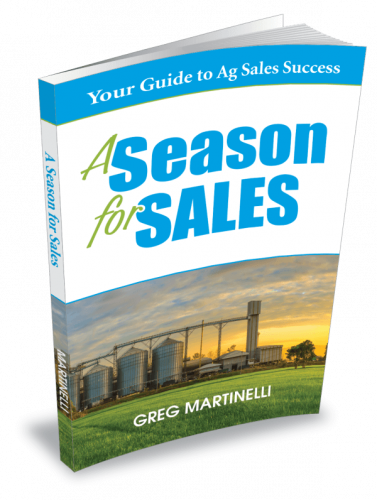The 2 data points you must have to plan your schedule
The wild, wild west vs. assigned territory strategy
Too many times in the last 7 years of training sales teams, I have run into the same sales productivity problems. Thought the discussion might help you on your sales productivity journey. As I call it, the “never-ending journey” because no one can tell you exactly how to do it. You have to take the concepts and apply them to your local situation. I hope these tips help.
Data Point #1:
Part one of the problem starts when I ask the salesperson to describe their territory in numbers. Whatever numbers they have access to. That might be total sales dollars, gross profit, net sales, tons, seed units, acres, bushels, animals sold to, and number of customers. You get the point. I just want to know whatever measure they are using to determine the size, scope, and health of their selling success.
Too often, the salesperson does not have that information. They don’t receive any status updates on how they are doing. The reasons for not having this information are often real reasons. It might be due to the accounting software and its inability to pull this information out. However, too often, it’s due to the next dilemma I see in many teams. I call it the wild-wild west strategy of managing salespeople.
The Wild, Wild West vs. Assigned Territories:
As the settlers came west in the 1800s, they had a gigantic wide-open world to settle. They could go everywhere and anywhere they wanted. And so, they did.
This same strategy is often used in managing salespeople. No assigned customers and no assigned geographic territory. In my own experience, I was given three states to sell into and at that time, we had several go-to-market strategies: dealer, distributor, and direct to the farm. My territory map was an atlas and my prospect list numbered in the 100s. Needless to say, I spent a lot of time with my manager to figure out how to approach such a large endeavor.
First, an assigned territory means you have a designated sandbox within which you are assigned to sell within. The most common are geographic or customer segments. The reason this is so helpful is that it narrows down our salesperson’s focus. It gives them rough guidance on where and who you want them to sell.
The opposite of this is where you simply set the sales team loose and allow them to figure it out. They sell wherever and whoever they choose.
There are definite advantages to both systems. Assigned territories helps keep a large sales team from running into each other and from ignoring certain parts of your customers. It is also the basis for measuring the results of your sales team. However, the downside is that it can create turf wars and unwanted silos in your business. This is often the reason the assigned territory strategy is discontinued at a company.
While I am generally not a fan of the wild, wild west strategy, I do think there are times when it is the best option. First, is when you have a well-established sales team. A sales team that has been together for a long time has probably figured out where they sell and who they sell to. They know their niche and respect the other people on the team for their niche.
The next place this strategy is effective is when you sell very large project type work. These selling processes and selling cycles are long and involve multiple people and departments within your company to complete.
A third situation that may lend to not assigning territories is when you have a brand-new company and don’t know your place in the market yet. This would be difficult to designate and need frequent adjustment. Better to let this develop for a while as your new company figures out how to segment your market.
If not in one of those situations, then I highly recommend having some way to aim your sales team. Without it, you could be killing their productivity.
If the salesperson in my discussion has a designated territory and some form of total sales results, great. There is one last sales productivity hurdle that few of them have: profitability information.
Data Point #2:
Profitability by customer and product: Step one is having a customer list by name. The next step is to have that customer list by the volume they buy (units or dollars). However, we know that volume doesn’t always relate to profitability. It is extremely important that your salesperson knows where the company’s profitability is coming from. Without this information, most salespeople will chase high volume. In their mind, all things being equal, the larger customer must be a more profitable sale.
Yet, too often, price concessions or volume pricing are needed to sell that large customer, which decreases profitability. Sometimes, so much so that they are not your top customer for profit. In some cases, you might find you are actually losing money on those accounts. Returned products, subsidized freight, and discounts after the sale can all lead to invisible margin erosion.
Once you have this information for customers, you can make an educated decision on where to spend your time and what type of customers you want to work with in the future.
Once that is accomplished, do the same thing for your products. In the absence of data on profitability by product, again, most salespeople will focus on selling high-volume products. On a dairy farm, selling the lactation ration is most likely the largest volume of sales. Most salespeople will focus on it. Often, they ignore calf, heifer, silage, or hay products. Yet they are much more profitable.
Which products are your bread and butter? Which are high margin and help out the lower margin products? Which customers are the most profitable? Which ones buy all their products from you versus cherry-picking?
Sales Productivity truly is a never-ending journey as you, your company and your customers change. Every day you make the choice of where to spend your most valuable resource: time! That choice makes the difference between sales success, mediocrity, or worse.


